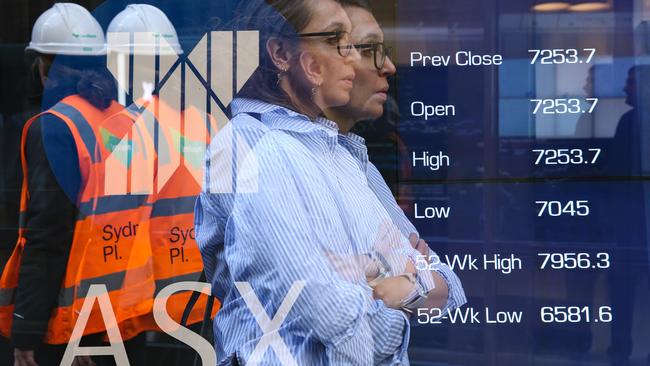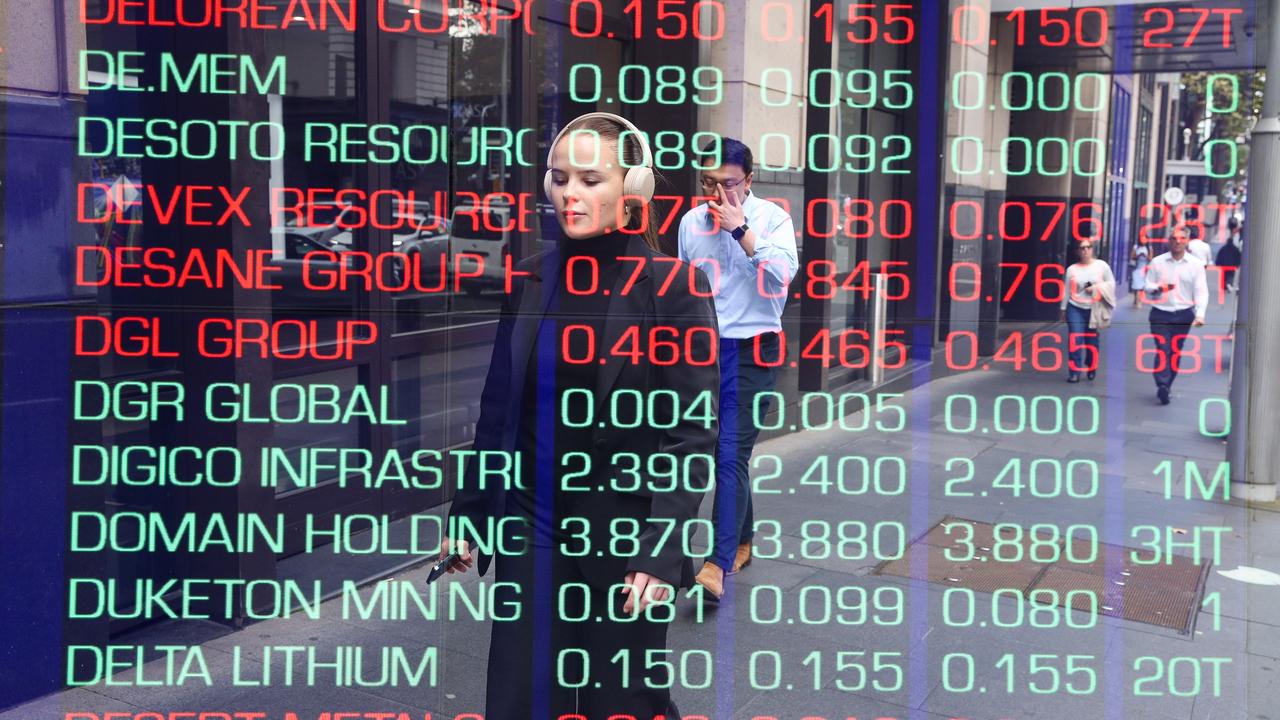Australian shares surge 9.7pc in FY23
The local sharemarket delivered a surprisingly strong return for the 2023 financial year, but relative performance is waning.

Australian shares have delivered a surprisingly strong return for the 2023 financial year.
After diving 10.2 per cent in financial 2022 as central banks launched their most aggressive interest rate hikes in several decades amid booming economic growth and stubbornly high inflation after the Covid-19 pandemic, the S&P/ASX 200 benchmark jumped 9.7 per cent in financial 2023.
It’s the best financial year since a 23 per cent surge in financial 2021, when corporate earnings and sharemarket valuations were boosted by an unprecedented amount of fiscal and monetary policy stimulus during the pandemic. It’s also well above the decade-average gain of 6.6 per cent.
On a total return basis, which assumes that all dividends were reinvested in the index, the S&P/ASX 200 achieved a 14.5 per cent return in FY23 after falling 6.1 per cent in FY22 on a total return basis.
Balanced super funds – with roughly 70 per cent in shares and 30 per cent in bonds, are likely to have generated positive returns of around 8-9 per cent, according to AMP Capital.
In the US market, the flagship S&P 500 index rose 17.2 per cent in the year to 30 June. The tech-focused Nasdaq Composite rose 23.5 per cent amid a boom in US artificial intelligence stocks that has accounted for most of the rise in the US market so far in calendar 2023.
For much of calendar 2022, the Australian market benefited from a lack of tech exposure as tech was hit by soaring interest and China’s regulatory reforms. The heavy weight of banks in the local market also helped its relative performance last year, as net interest margins soared.
But the underperformance of tech and outperformance of financials looks to have turned around in calendar 2023. That’s due to the AI boom and regional bank jitters in the US, and rising competition for bank deposits and the risk of higher bad debts as the economy slows.
Technology was also the strongest sector of the Australian share market in FY23.
The S&P/ASX 200 Information Technology index soared 36 per cent in the period. However, its small weighting meant it accounted for less than 1 percentage point of the rise in the Australian market.
Australian shares have lagged the US over the last six months due to the relatively small exposure of the local market to the booming tech sector, increased hawkishness on the part of the RBA and concerns about the strength of the recovery in China. The S&P/ASX 200 rose just 2.3 per cent in the first half of calendar 2023, while the S&P 500 soared 14 per cent, with the NASDAQ up 30 per cent.
Australia’s heavyweight materials and financial sectors, respectively dominated by the big iron ore miners and the major banks, were by far the biggest contributors to the rise in the overall market.
The materials sector rose 15 per cent, adding about 3 percentage points to the S&P/ASX 200.
The big miners soared in late calendar 2022 amid a positive reassessment of the iron ore price outlook after China’s earlier-than-expected ending of Covid-19 restrictions.
However, China’s sputtering economic rebound and seeming reluctance to provide additional fiscal stimulus since then, combined with energy price falls after a milder than expected northern hemisphere winter, has capped the strength in the materials and energy sectors in calendar 2023.
Moreover, while the tech sector has also been the best performing sector over shorter time frames, the heavyweight materials and financials sectors, together with the interest rate sensitive consumer discretionary sector, have lost considerable momentum in the second half of FY23.
This pattern may continue in the first half of FY24. Miners may yet be supported by broadbased stimulus in China, based on recent comments from officials, and they also have potentially strong structural tailwinds from decarbonisation and deglobalisation and the consequent risk of sustained inflation.
AMP Capital’s head of investment strategy and chief economist, Shane Oliver, said the sharemarket’s rebound from negative returns in FY22 come as global and Australian shares rebounded on signs that inflation has peaked and the Federal Reserve may be near the top of rate hikes, and as worries about the war in Ukraine receded after driving up the price of energy in 2022.
“We continue to see shares doing okay on a 12-month view as central banks ease up as inflation cools but the risk of a near term correction is high,” he said.
Leading economic indicators now show a high risk of recession — Bloomberg consensus estimates show a 65 per cent chance of US recession and a 50 per cent chance for Australia — and China’s recovery “looks less robust than expected, with policy stimulus there so far pretty modest.”
“Central banks maybe close to the top but they remain hawkish, with a high risk of going too far, and while the month of July is often good for shares — particularly in Australian shares after June tax loss selling is reversed — the period out to September-October is often rough for shares,” Dr Oliver added.
July is typically the strongest month of the year, with a decade average gain of more than 3 per cent for benchmark indexes in both the US and Australia. But August and September are typically down months in Australia, and September has been the worst month in the US over the past decade.
The consumer discretionary and financial sectors may suffer the most as the Reserve Bank presses on with interest rate hikes to suppress inflation expectations even though the cumulative impact of its 4 percentage point lift in interest rates is expected to slow the economy to stall speed.
UBS Australia equity strategist, Richard Schellbach, said a growing realisation that the RBA still has more work to do has reignited fears that a recession may be needed in order to bring down inflation.
With equity prices, earnings estimates and valuations still to yet to adjust to what could be in store over coming months, he concludes that sectors of the market exposed to the domestic consumer will remain on the back foot over the coming months.
Mr Schellbach favours shares that are “detached from the consumer slowdown” – tech, health care and insurance – and those with high and stable dividends – infrastructure, utilities and insurance.
He’s negative on the banks, building materials, consumer discretionary and real estate sectors.




To join the conversation, please log in. Don't have an account? Register
Join the conversation, you are commenting as Logout